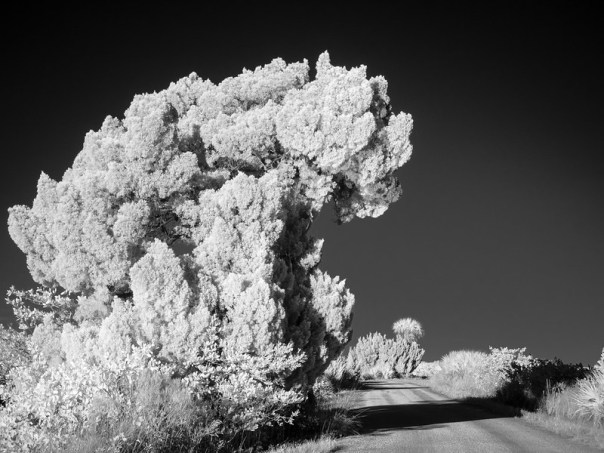Here are several photos I made recently. To me they don’t strictly fit into the Landscape or wildlife categories, although they do include those as elements in the compositions. I like them though, so I’ll post them here and call them “Nature photos“.
When I first saw the dolphin, it was a little too far away for a good wildlife photo, so I waited for it to swim even farther into the colors reflecting in the water. I’m pretty sure it was only thinking about catching fish for breakfast, but the scene made me wonder if it thinks about other things sometimes.
 Do Dolphins watch the sun rise?
Do Dolphins watch the sun rise?This still water made a perfect mirror on that morning. But I probably wouldn’t have made a photo if I hadn’t seen the bird off to the right. It was moving left, so again I waited and clicked the shutter as it crossed the line of clouds.
 Ibis in the clouds
Ibis in the cloudsI’d think that as much rain as we have sometimes here in Florida, I’d see scenes like this more often – but I don’t. I like how well defined the footprints are in the dried mud. I wish I was knowledgable enough to read the story these tracks are telling us.
 Making tracks
Making tracksAnd in this last one, I was photographing the clouds and water with a neutral density filter and small aperture to get a 10 second exposure. When I finally noticed the birds in the surf, I quickly removed the ND filter and opened the aperture to get to a 1/10 sec. shutter speed and capture the birds reasonably sharp. When I got home I blended the two frames together to get what you see here. I guess this one is a landscape photo, but I think the birds add to the scene.
 Below the angry clouds
Below the angry cloudsThe header image is the wake left behind by a running Coot. I cropped most of the bird out, to fit the theme of the post. If you’re interested, you can view the whole image at this link: https://www.flickr.com/photos/edrosack/51097712962/in/photostream/lightbox/
So, are these wildlife photos, landscape photos, or nature photos? What do you think?
Thanks for stopping by and reading my blog. Take care of yourselves and each other. And when you can – make some nature photos!
©2021, Ed Rosack. All rights reserved




























